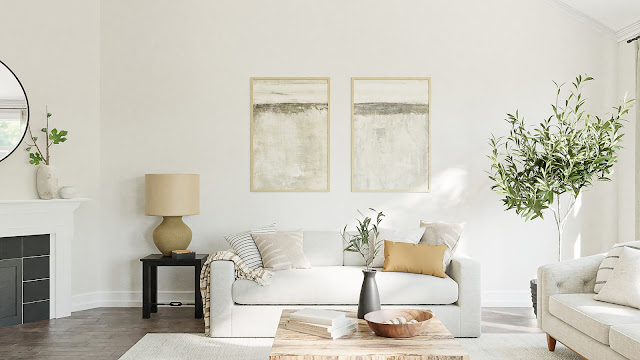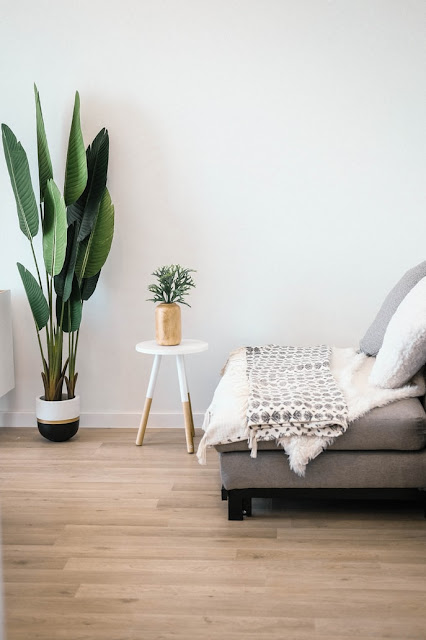Look for the Hidden Spaces
These are spots around the house you wouldn’t normally think of using for storage:
• The areas under kitchen cabinets. This sounds a bit whacky, but when you think about it there’s loads of space down there. OK, so it’s not very tall, but it can be great for stowing mops and brooms, board games and jigsaw puzzles, rarely used bake ware or sports bats and racquets. Take off the kickboards and fit hinged or sliding doors instead.
• The cupboard under the stairs. This can work much harder than it normally does through fitting extra shelves and hooks.
• The walls and ceilings. Shelving is the ideal storage solution in all areas of the house. You could run a single shelf around the perimeter of the room at picture rail height and use it for valuables you want to keep out of the way. Place shelves over doors - great in the bathroom for towel storage, or around doorways to create a faux recessed doorway.
• Add mirrors and shelving in alcoves or other shady spots to help bounce light around as well as offering more storage space.
Don’t Try to Keep Everything at Home
Sometimes there simply isn’t enough room, and you’ve already fitted all the shelves you want. In this case, it’s time to get a bit more creative. You can do that by adopting the seasonal approach to storage.
You’ll need the help of a self storage unit, and fortunately these are plentiful, so you’re bound to find a storage facility nearby.
Having secured your storage room, you then divide all your possessions into their seasonal categories and store the ones out of season.
• During winter, all the summer stuff can be cleared out of the house. This includes garden furnishings and equipment, barbecues, and kids’ outdoor playthings as well as clothing.
• During summer, swap the garden stuff and lighter clothes for all your winter gear. Include winter sports kit, winter motoring accessories and all the family’s heavy coats and boots, sweaters, and accessories.
This solution to never having enough space at home has hidden benefits too. When you haven’t seen an item for a few months, it seems new and fresh again. It’s also the answer to immediately throwing something out then regretting it, as you get a cooling off period before you let go of any possessions. This can save money in the long run as you won’t need to buy replacements as often.
Control the Everyday Items
Often, it’s the little things that are the most annoying. Everyday clutter can be a real battle when everyone in the house is adding to the pile. From games controllers to phone chargers, tablets, notebooks, children’s toys, magazines or books, everything left lying around on surfaces creates a cramped, cluttered look.
Storage furnishings can really help. If you’ve been thinking of upgrading or you just fancy a change, look for items with built in storage that can help corral all those irritating gadgets we depend on for everyday convenience.
• Footstools with storage
• End tables with drawers or shelves
• Coffee tables with lift up tops or shelves beneath
• Decorative trunks or chests that can double as seating
• Ottoman or divan beds for kids as well as adults
• Raised children’s beds with desk or wardrobe space underneath
Don’t Try to Keep Everything at Home
Sometimes there simply isn’t enough room, and you’ve already fitted all the shelves you want. In this case, it’s time to get a bit more creative. You can do that by adopting the seasonal approach to storage.
You’ll need the help of a self storage unit, and fortunately these are plentiful, so you’re bound to find a storage facility nearby.
Having secured your storage room, you then divide all your possessions into their seasonal categories and store the ones out of season.
• During winter, all the summer stuff can be cleared out of the house. This includes garden furnishings and equipment, barbecues, and kids’ outdoor playthings as well as clothing.
• During summer, swap the garden stuff and lighter clothes for all your winter gear. Include winter sports kit, winter motoring accessories and all the family’s heavy coats and boots, sweaters, and accessories.
This solution to never having enough space at home has hidden benefits too. When you haven’t seen an item for a few months, it seems new and fresh again. It’s also the answer to immediately throwing something out then regretting it, as you get a cooling off period before you let go of any possessions. This can save money in the long run as you won’t need to buy replacements as often.
Control the Everyday Items
Often, it’s the little things that are the most annoying. Everyday clutter can be a real battle when everyone in the house is adding to the pile. From games controllers to phone chargers, tablets, notebooks, children’s toys, magazines or books, everything left lying around on surfaces creates a cramped, cluttered look.
Storage furnishings can really help. If you’ve been thinking of upgrading or you just fancy a change, look for items with built in storage that can help corral all those irritating gadgets we depend on for everyday convenience.
• Footstools with storage
• End tables with drawers or shelves
• Coffee tables with lift up tops or shelves beneath
• Decorative trunks or chests that can double as seating
• Ottoman or divan beds for kids as well as adults
• Raised children’s beds with desk or wardrobe space underneath
Making More Closet Space
Even if you don’t do anything else, sort out your wardrobe. When you can easily see everything and instantly find what you’re looking for, it gets the whole day off to a good start.
• Put a plastic drawer tower in the bottom of the wardrobe for added storage.
• Fit another rail inside the closet beneath the main one to double the amount of hanging space.
• Use hanger extenders which can also double your hanging space.
• Fix hooks or a narrow rail inside the wardrobe door to hang accessories such as beads, head bands, ties, or belts.
• Fashion a shoe rack from a couple of tension rods in the bottom of the wardrobe.
• Use shelf dividers on the top shelf in the closet to help keep folded, stacked items tidy.
Of course, you're the only one who knows exactly what kind of storage you need, and where. Hopefully we’ve given you a couple of ideas to get going with, whether it’s investigating a self storage room or simply fitting a few additional shelves in underused areas.
Home organisation is an ever-changing challenge, so be prepared to rethink your first thoughts as time goes on and kids grow older.
*Collaborative Post



0 comments